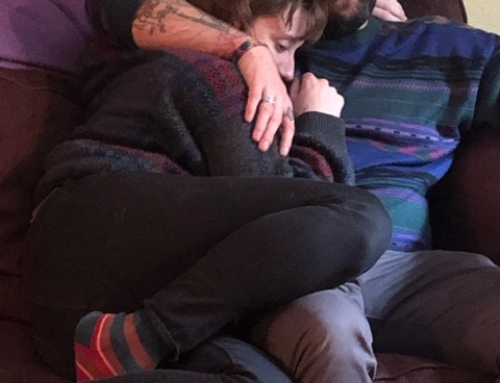The fine art of communicating through tiny screens
I don’t know about you, but I am equal parts thankful for and exhausted by Zoom and all of the various iterations of video conferencing. A year in, many of us have become pretty adept at holding meetings, attending events, and connecting with friends and loved ones online. Given a choice, I’m guessing a good number of us would rather do most of those things in person. And, here we are, with glimmers of hope that we’ll be back face to face some time this year, but for now we carry on with our tiny screens.
And oh man, those tiny screens! Researchers are digging in to the impact on our brains, helping to explain why it is so exhausting to be online together. They point out things like the incessant eye contact, the discomfort of watching ourselves talk, the immobility of having to be in front of the screen, and the extra work it takes to interact and read each other, often incorrectly, when non-verbal communication is limited to such small images. There are some sound suggestions in this article for countering these issues:
It’s got me thinking about how we can better navigate the already choppy waters of communication when we’re online. Studies have shown that for the dominant culture in the US, meaning is communicated in a ratio of 7-38-55. The ratio says that 7 percent of meaning is communicated through the words we say, 38 percent through our tone of voice, and a whopping 55 percent through body language.
Some experts bump that up to 70%. But body language on a tiny screen just doesn’t offer enough accurate information to help us understand each other in the ways we might when we are physically together. If it did, we wouldn’t need the thumbs up or clapping emoji, the raised hand or the laughing face.
The 7%, the words, the flow of conversation also takes a hit online. It’s challenging to know when to speak up, especially when etiquette dictates that we stay on mute unless we are speaking. And communication is inevitably stilted by, at some point, having to remind someone that they are on mute – the official phrase of 2020! Or—and I will be forever grateful to that man—we wind up looking like a cat, even though we aren’t a cat. (If you don’t get this reference, please, please look it up online.)
Online or in person, I continue to believe that the Wild sweet spot in communicating with each other lives in the 38%, the tone, and I would add, the intention behind our words. Like when I’m running a dog team and giving a voice command, I am also picturing the dogs making the turn. Sure, I say the word “Haw” (which means left), but it’s also my tone—reinforcing our connection, conveying the confidence I feel in their abilities, and picturing what I want to have happen. Whether we have four legs or two, we pick up on tone and intention, even more than the words. And in an online setting, I would submit that this is where we have room to deepen connection and communicate more clearly.
I’m reminded of guiding a whitewater canoe weekend years ago. Two women who were long -time paddling partners were running a set of rapids. I was on the shore with the rescue rope (just in case) and was close enough to hear over the rushing water when one of them said to the other, “Let’s aim for the dry water!” Her partner yelled “OK,” and they steered their canoe perfectly in sync with each other, both knowing exactly what she meant by “dry water.” The words weren’t as important as what she was conveying in her tone and intention.
We humans put a lot of stake in words. Heck, I make a good part of my living using words. But they make up just a small part of what we are trying to convey.
So here’s my advice and a Wild dare for you as you get ready for yet another Zoom meeting:
When you can, take a few minutes ahead of time to get lined up with how you are showing up and what you want to have happen in the meeting. If there isn’t time beforehand, then I dare you to have the whole group take a minute or two to do it with you. Tune in, focus, do your best to be Wildly Present, which is the practice of giving your undivided attention, and communicate through your tone and intention.
“Grace” is what truly ought to be the word of 2020 and beyond, as we do our best to understand each other and keep going on this Wild ride. There are plenty of reasons to be immensely glad that tools like Zoom are available. They help keep us connected, so that we can collectively aim for the “dry water” and wind up headed in the same direction.








